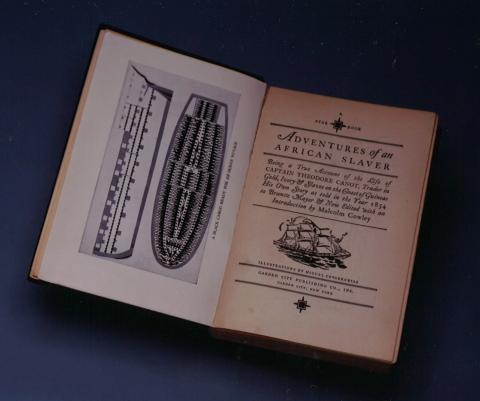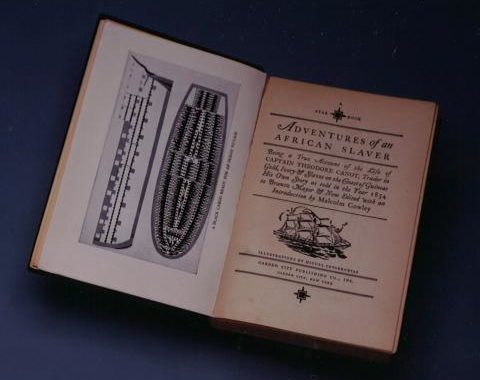One of the few, detailed accounts of the commercial slave trade by a participant was captured in the memoirs of Captain Theodore Canot, a slave trader for nearly three decades. Originally written in 1854, Adventures of an African Slaver: Being the True Account of the Life of Captain Theodore Canot, Trader of Gold, Ivory and Slaves on the Coast of Guinea is filled with information on nearly every aspect of the slave trade in the 1800s. The text details Canot’s extensive travels into the interior of Africa to buy slaves, the treatment of enslaved Africans on slave ships, the suppression of a slave revolt at sea, as well as financial tables that expose the expenses and profits of his involvement in the slave trade.
A 1928 edition of Captain Theodore Canot’s memoirs edited by Malcolm Cowley is on display in the From Slavery to Freedom exhibition at the Freedom Center. In an exhibition space that is meant to commemorate those that survived and died during the Transatlantic Slave Trade, this book serves as a reminder that the historic institution of slavery functioned as a business that offered no sustenance to those it enslaved.
-Cori Sisler, Manager of Collections and Exhibitions


